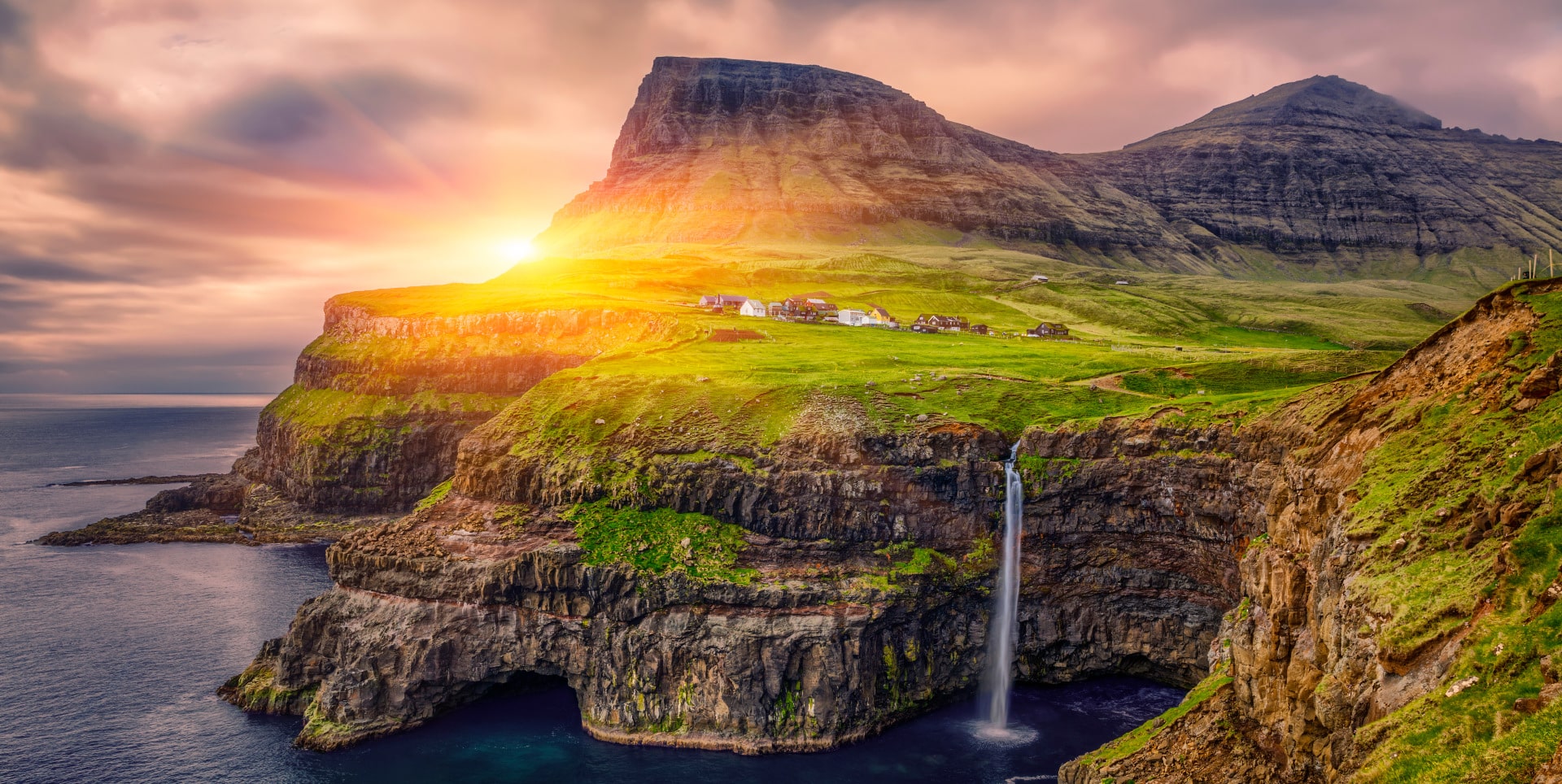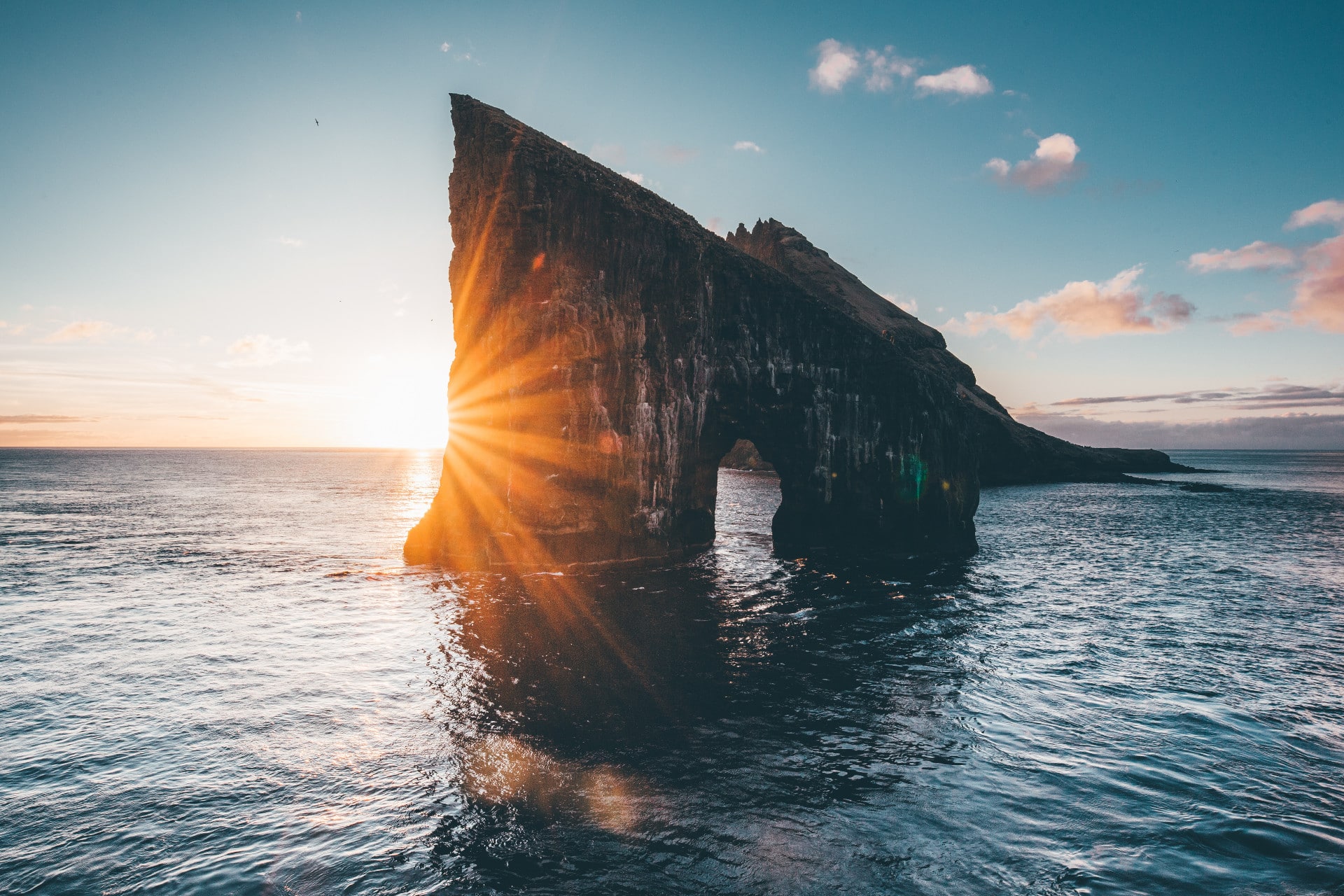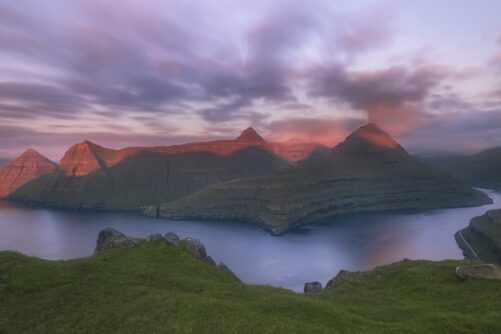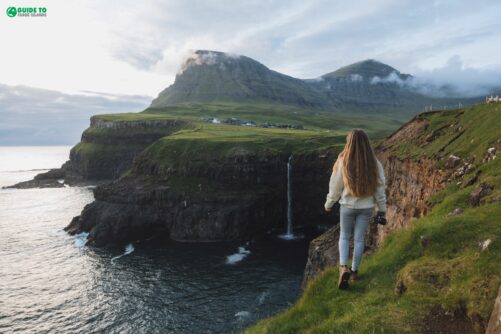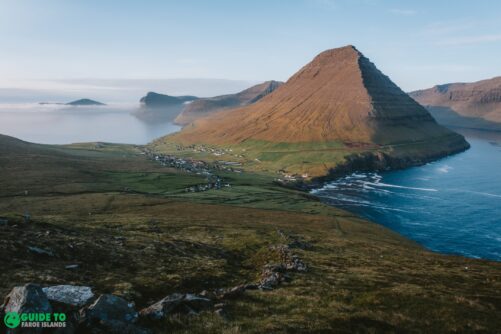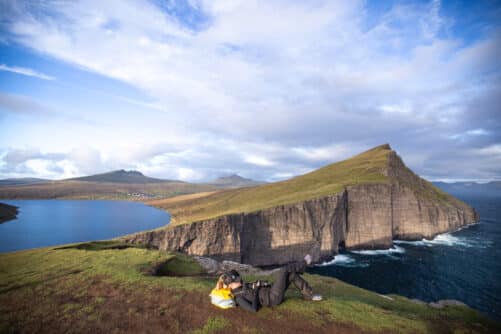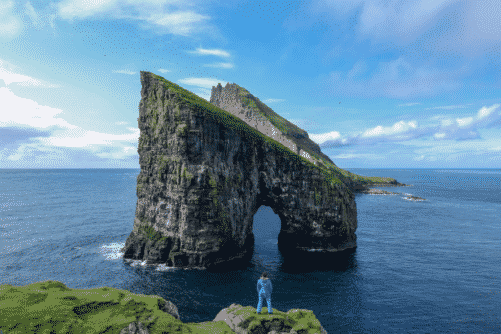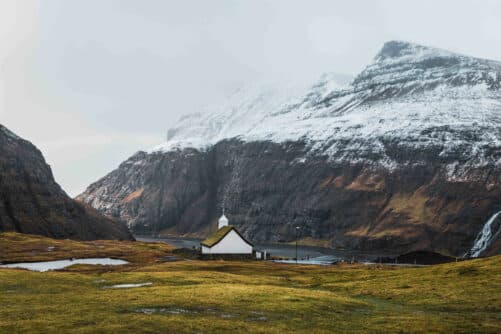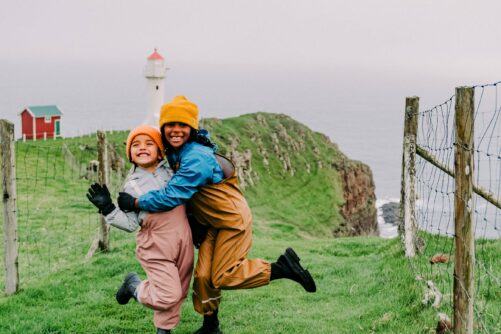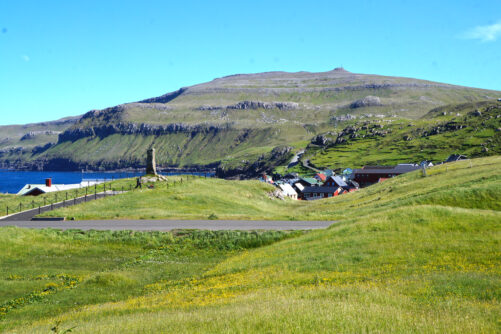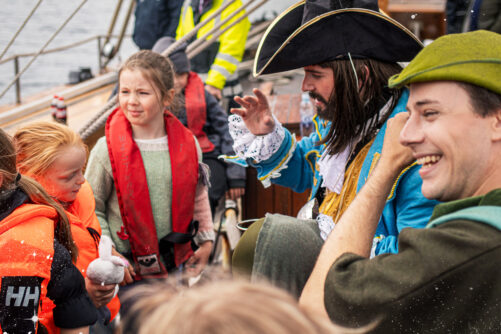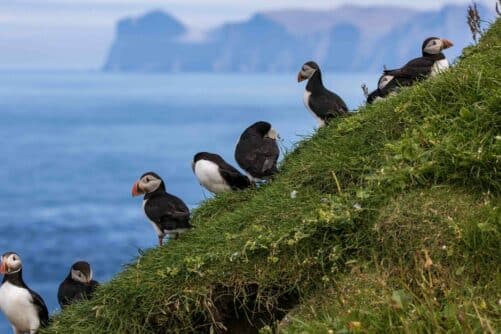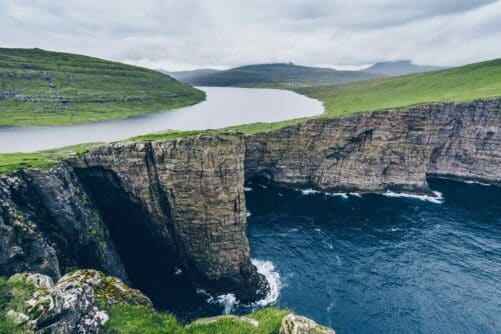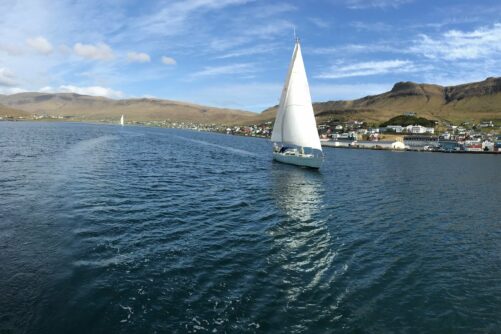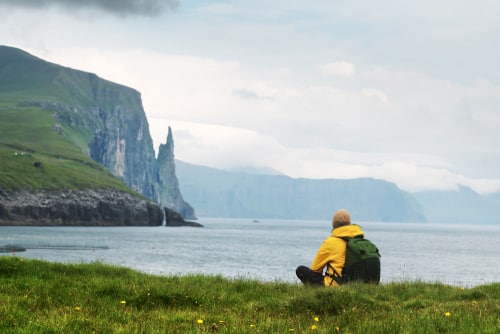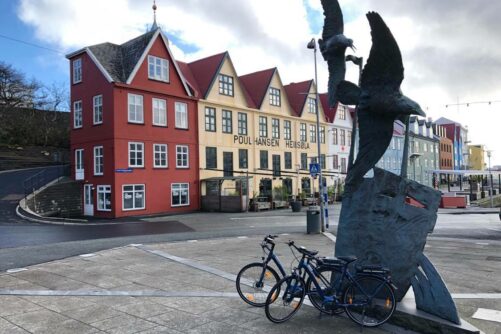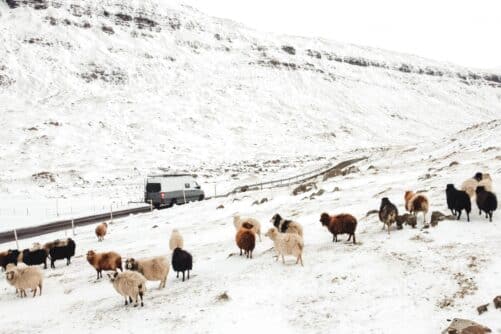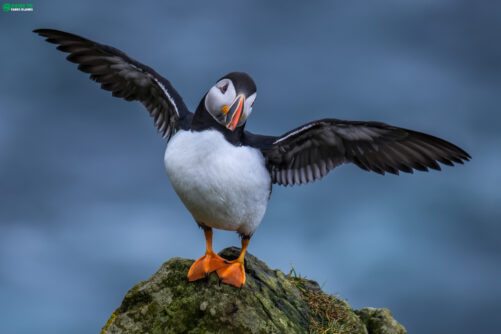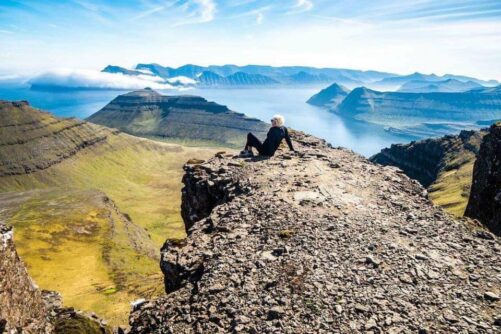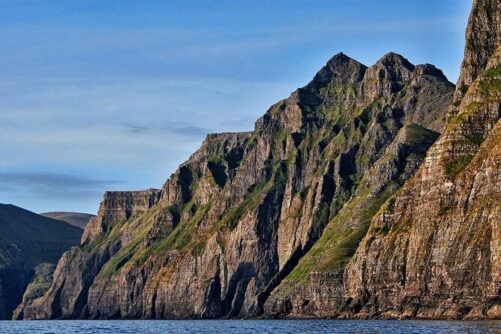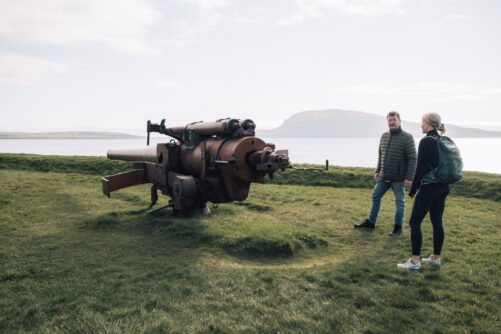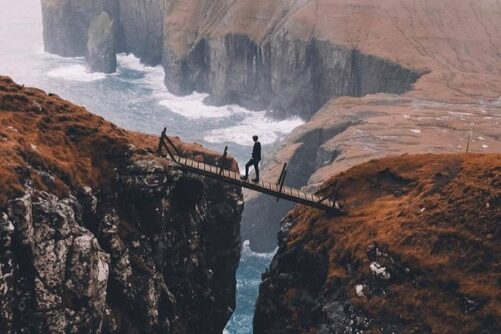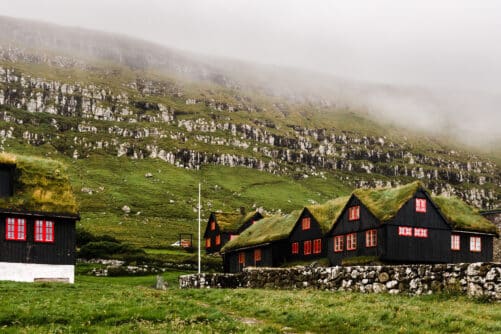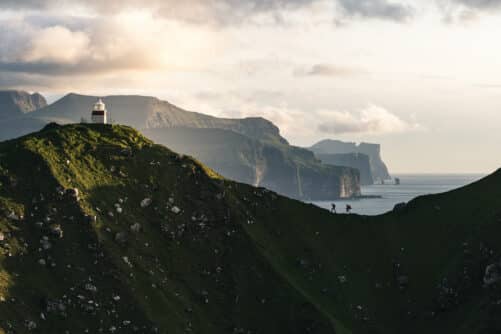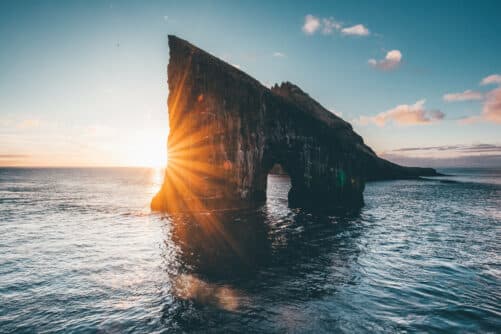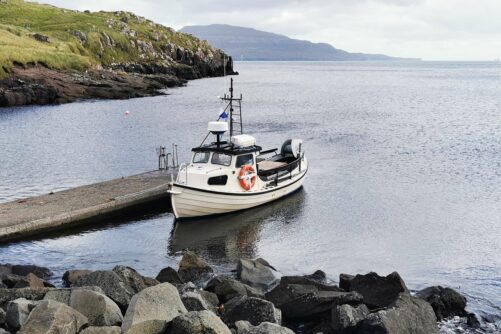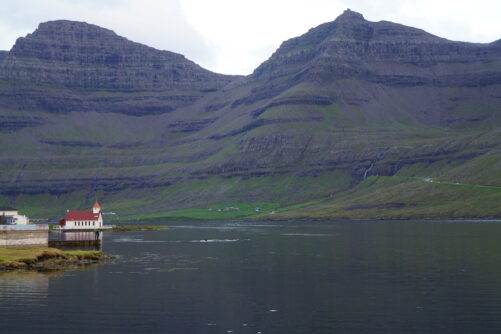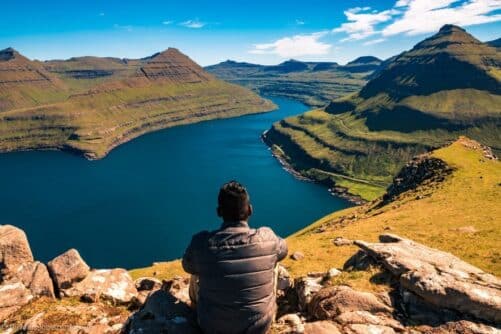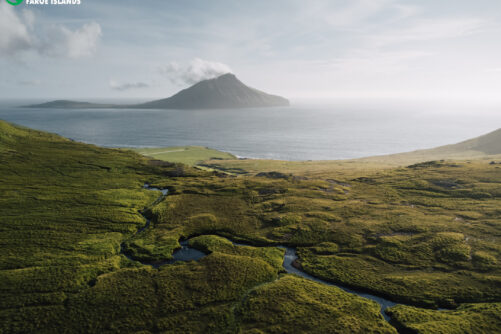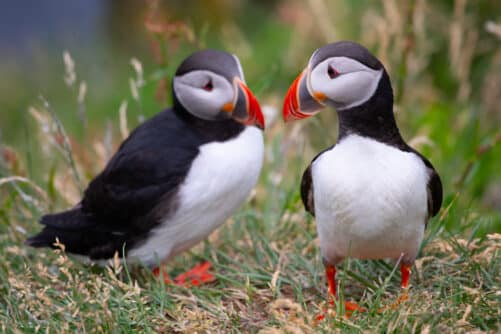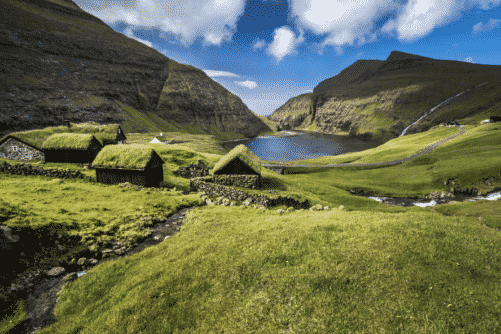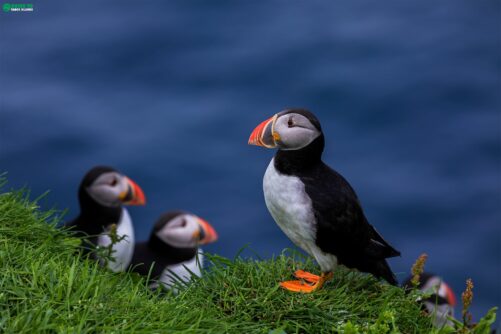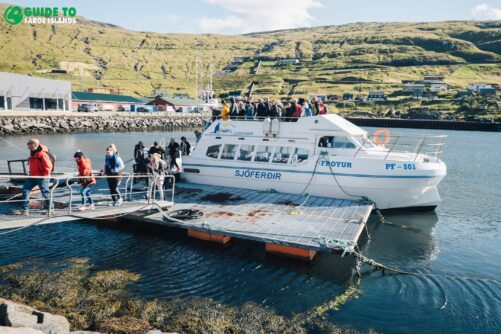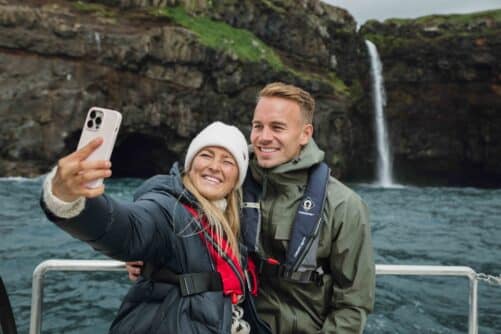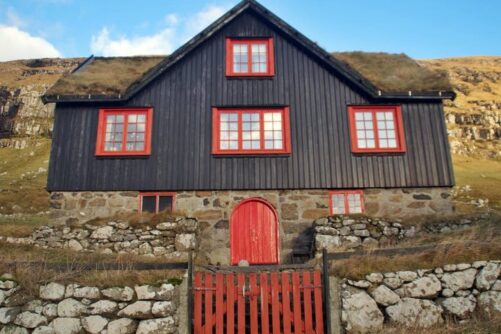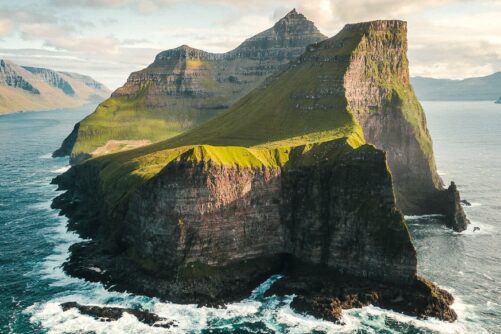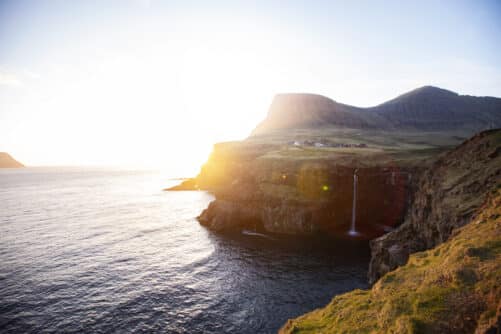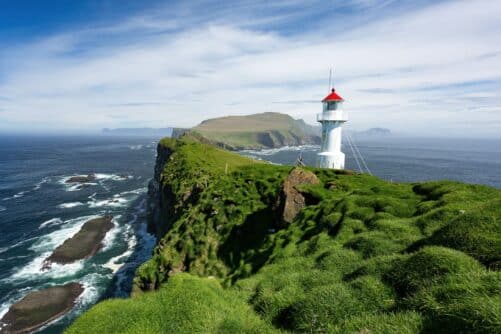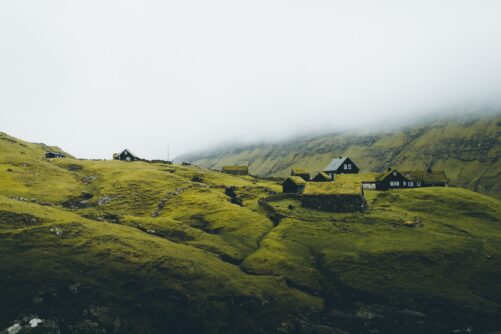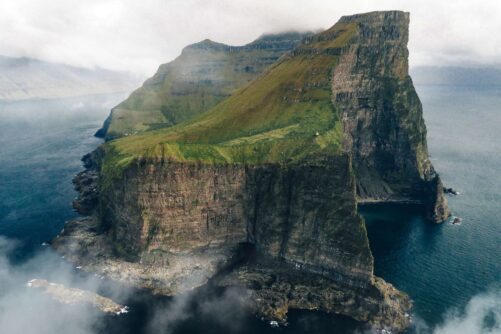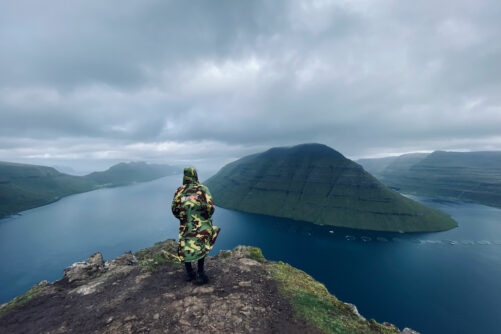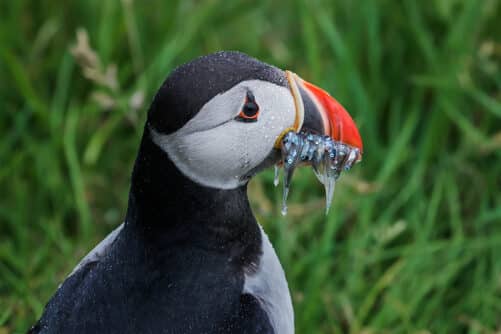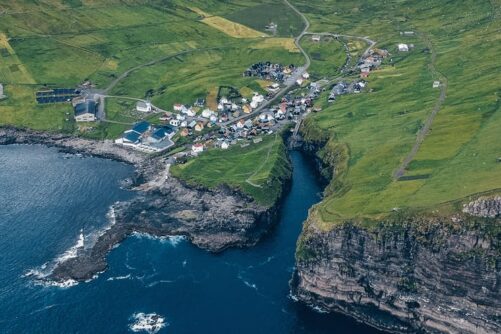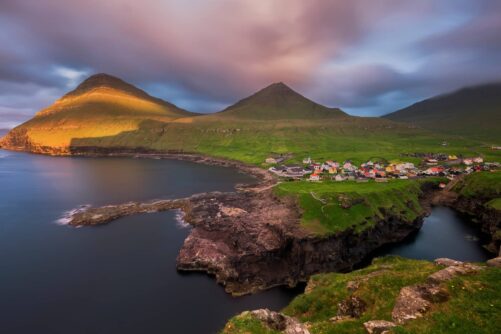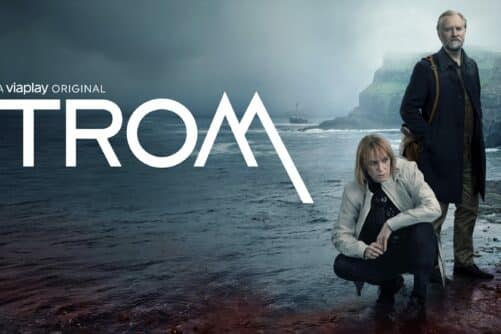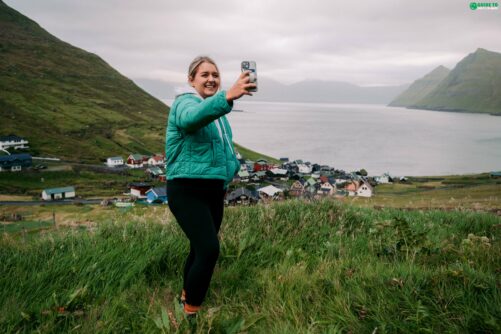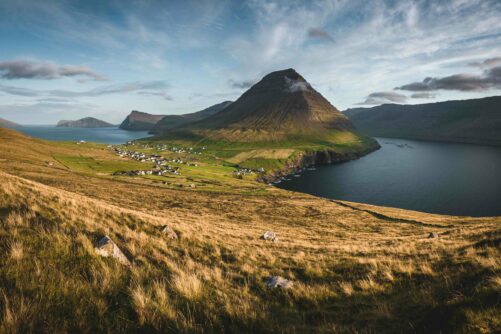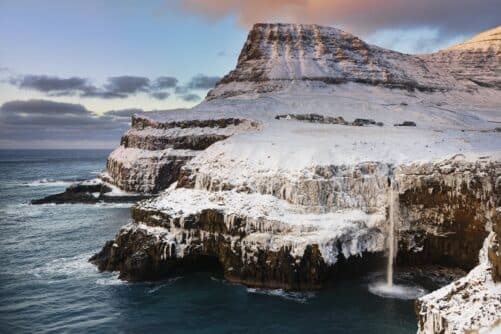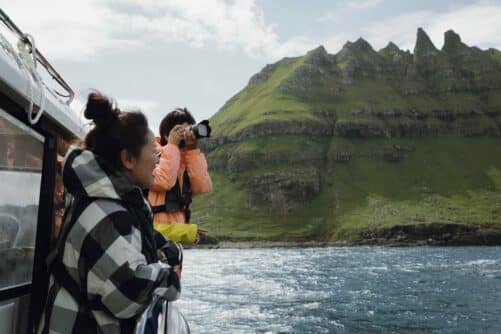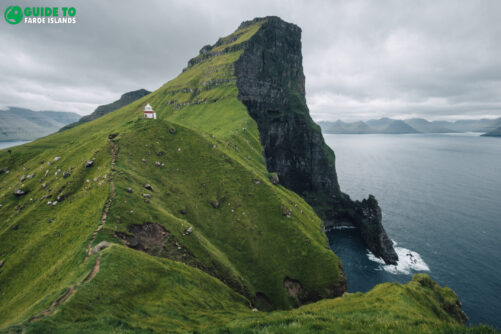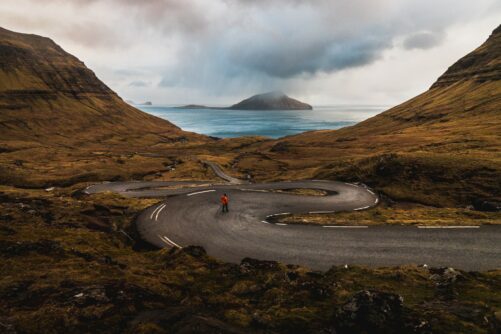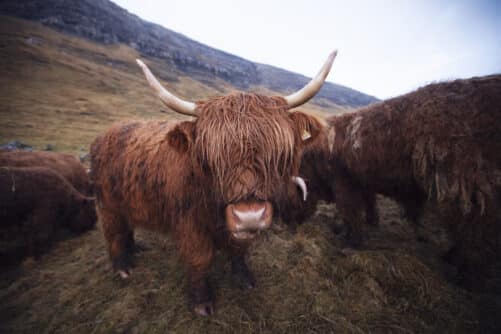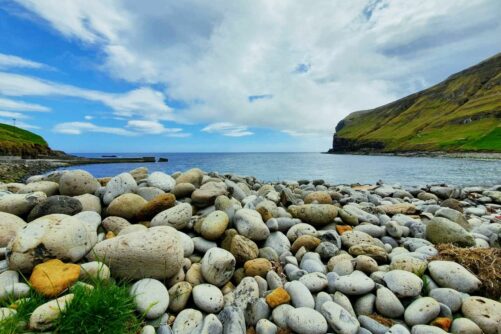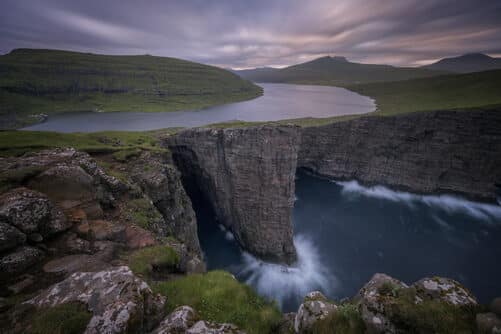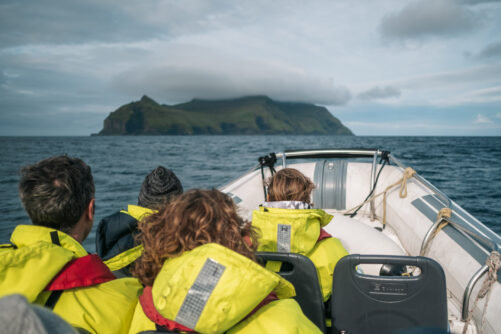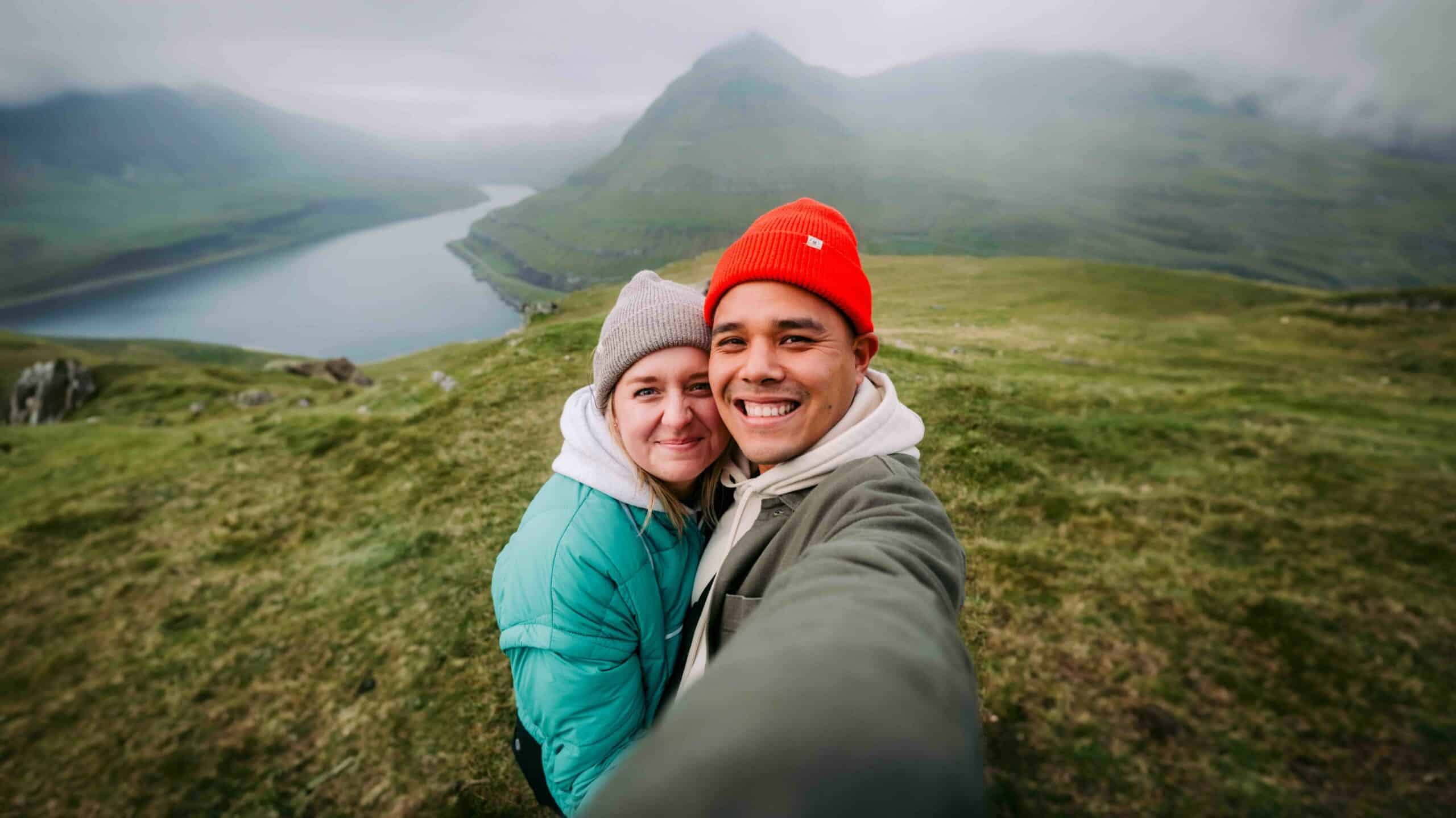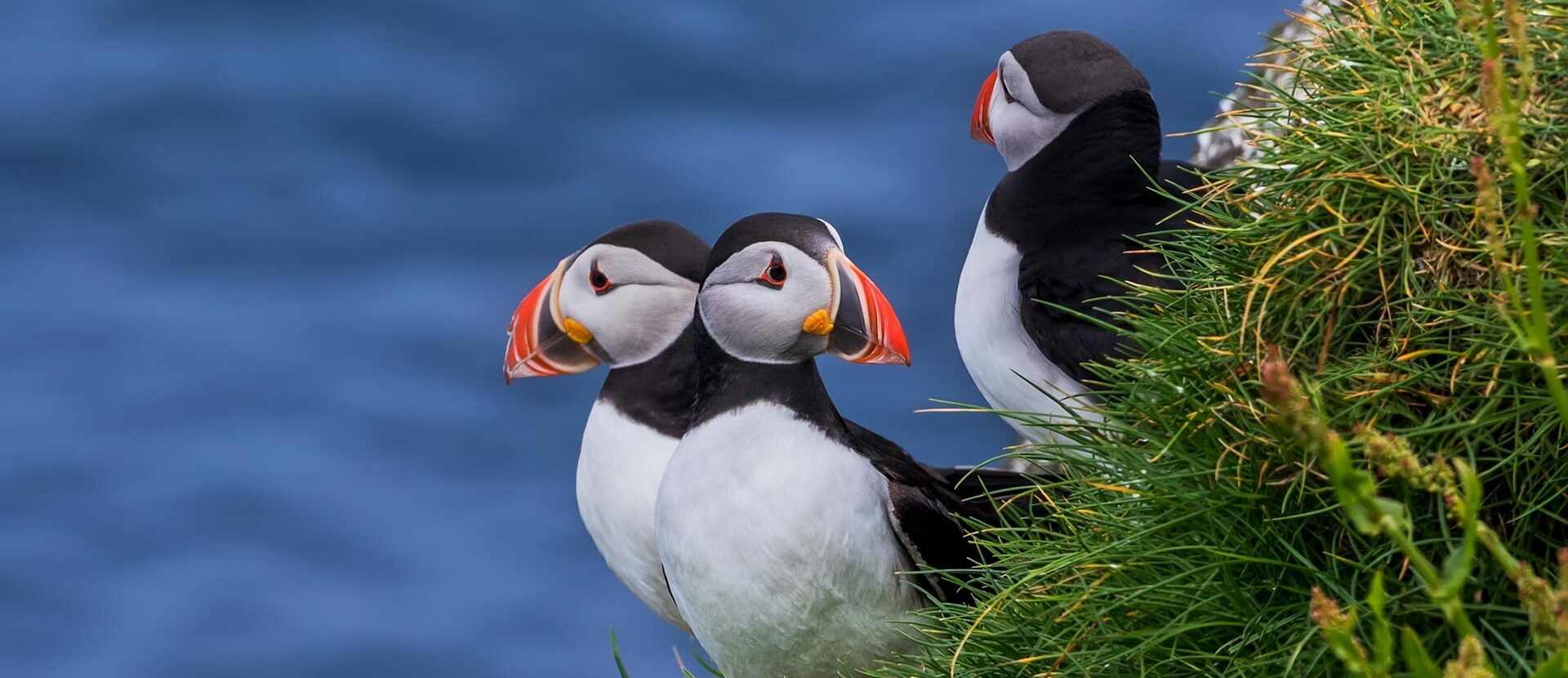
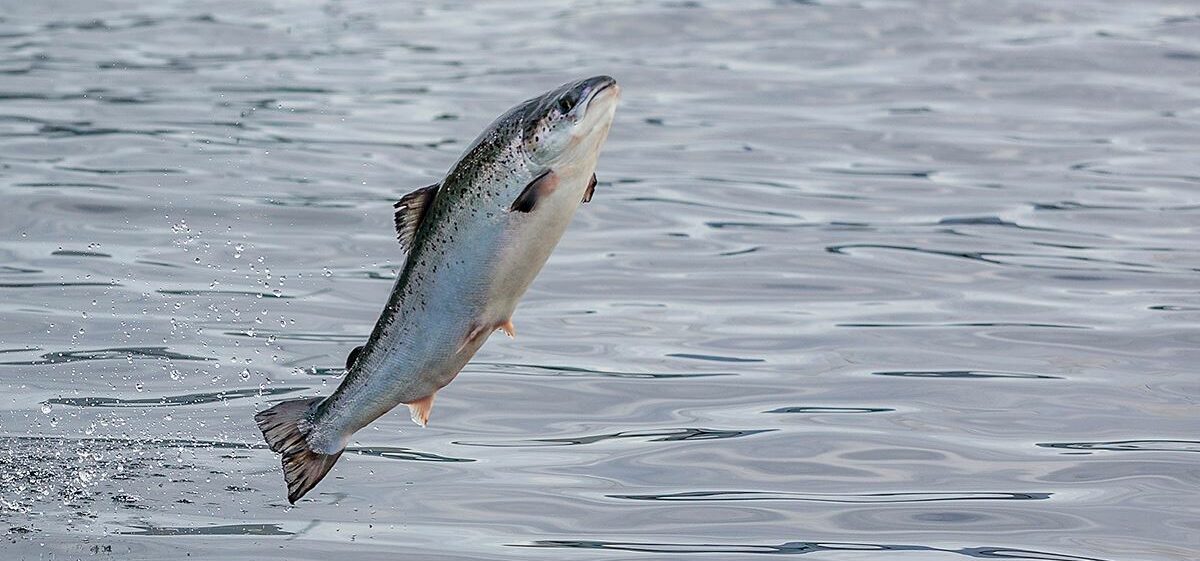
Sports Fishing in the Faroe Islands

Where can you go fishing in the Faroe Islands? What could you expect to catch? Is it best to go fishing with a tour guide in the Faroe Islands? Here are some key facts about fishing on the “Islands of Sheep”.
- Join a Full Day Sports Fishing Tour
- Dip into the Faroe Island’s largest variety of Nature Tours
- Find the largest selection of Vacation Packages
- See also Boat Tours in the Faroe Islands
Of one thing we can be sure: When there is ONE country that has a saying “Small, but OH!” then it has to be the Faroe Islands. The average recreational angler may consider these islands somewhat isolated geographically, perhaps to be compared with the Shetland Islands, or some islands in the Baltic, but this impression is quickly revised once you stand on the shore with a fishing rod in your hand.
You have to experience the Faroes for yourself, if only because it is difficult to get hold of detailed information in advance of your trip. In fact, there is very little literature on the topic of sports fishing in the Faroe Islands.
Yes, there are some blogs and the occasional travel tip via testimonials, but these are mostly just ‘snapshot’ impressions and are not really based on years of local knowledge. Continue reading to learn all about sports fishing in the Faroe Islands.
A paradise – not only for anglers

The first word that comes to mind about the Faroes is ‘harsh’. This is closely followed by ‘overwhelming’. On the map, the Faroes are made up of 18 islands, with no point being further from the sea than five kilometres. ‘Water’ is, therefore, the country’s most dominant element, and this transforms the Faroes into a paradise, not only for anglers but especially for several fish species.
Due to its geographical location between Scotland and Iceland, and the fact that it represents a mix of the cold polar water and the warm gulf stream, the water around the Faroes is one of the most fish-rich of the North Atlantic. But there is also something special on offer ‘ashore’.

You have to imagine the Faroes as the tips of a mountain range that have appeared out of the ocean. They are green, and they are majestic. The terrain drops directly into the sea to a depth of up to 880 metres.
Rivers are, in general, only channels for run-off water, which after periods of little rain, all but dry up. However, the archipelago has abundant rainfall, so the impressive waterfalls are refilled continuously.
Endless Possibilities for Sports Fishing in Faroe Islands
Possibilities for sports fishing in the Faroes are almost limitless. Anglers have the choice of deep-sea fishing, fishing from a jetty, breakwater or beach, or fishing in one of the many lakes.
There is an absolute wealth of fish that are genetically pure. The sport is accessible to beginners and also full of challenges for professionals. Today you could choose to fish in the river for Faroe Islands salmon, tomorrow for sharks at sea, the day after for trout in the lakes. Here, fishing is all about how the mood takes you, provided the weather is right. So now it’s time to say a few words about the weather.
The Weather when Fishing in the Faroe Islands

In actual fact, the climate on the Faroe Islands is ideal for anglers. Due to the gulf stream, the winter is relatively mild (3°C on average), and situated in the north means it has fresh, windy summers (11°C on average). At midsummer in June, it is light for 24 hours, and that means 24 hours for fishing. And the wind takes care of the rest. A stiff breeze can also be helpful for those who lack experience in casting. But there are some things to note.
The climate is rough, and nature is primal. Life is in direct contact with the elements earth and water. That means you have to respect them and be ready for anything. When the sun shines at 10 a.m., you may well be happy an hour later that you brought your rain jacket.
However, those who know how to read nature, and use it correctly can experience unforgettable hours on the water. And as the saying goes: There is no wrong weather for fishing, only the wrong clothes. Now, let me guide you to the ‘Where’, ‘How’ and especially, the ‘What’ when fishing in the Faroe Islands.
Freshwater Fly Fishing in the Faroe Islands

Water is present on the Faroes in many diverse forms and speeds, some significant, others less so. Fishing in the rivers, however, plays practically no role. The geological characteristics of the islands mean the rivers only accommodate runoff rainwater.
- See also: 7 Incredible Boat Tours in the Faroe Islands
- Discover the 10 Most Beautiful Lakes in the Faroe Islands
Fishing in the small mountain lakes, however, is a multifaceted pleasure. These natural jewels can be found on each of the islands and sometimes represent real treasure both regarding the landscape, and the underwater world. Larger lakes are located on the islands of Vagar, Eysturoy and Sandoy.
FRESHWATER – The ‘What’

No non-predatory such as carps or others like pikes and perch occur naturally on the Faroe Islands. From time to time, you might catch a small type of arctic char. It is in this water that you fish for river (brown) trout, sea trout and salmon.
To set the scene: The Faroes are not a classic salmon territory. There are two lakes that rate as very successful for salmon fishing, the Leynavatn with its two Mjóuvøtn lakes further upstream, and the lake in Saksun. As a general rule, these lakes yield up to 10 large salmon per day.

The season is mostly from the end of July to mid-October. Much credit for this must go to the Faroes Fishing Association with its around 300 members, who have been very engaged over past decades in rearing and stocking Atlantic salmon, which they do with considerable expertise and enthusiasm.
In principle, the genetics of the Icelandic salmon have been adopted, although in recent years some ‘escapees’ from aquaculture cages have joined the wild salmon population. We recommend engaging the services of a local sports fishing guide in the Faroe Islands to get the most enjoyment from your fishing trip here. They know the best ‘tight lines’ tactics.
Fishing with a Local Guide
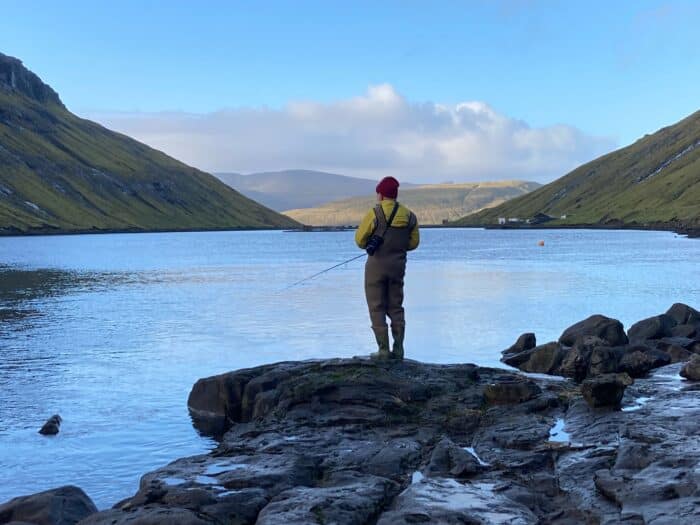
Sea trout are the real treasure of the Faroes. You find them everywhere and in large numbers, and there is no set season. However, fish over 60cm are seldom caught. They can be found in numbers where fresh water runs into the sea in specific radii to the coast, where they appear on the tides in large quantities or shoals.
Sea trout mostly feed on sand eels or crustaceans and therefore have rich red meat. They migrate to freshwater areas to spawn during the winter months, and they also like to alternate between fresh and salt water areas throughout the year. Important to note: it is not permitted to take any kind of fish under 30cm, and in this case, ‘catch and release’ is to be practised.
Faroese anglers are very keen to protect and keep this species. Here it also makes sense to go fishing with a guide because they know the ideal time and place that offer the best chances of a good catch.
Apart from sea trout, the brown trout represents one of the real treasures of the islands. They are present in all the lakes and appear in different sizes and colours. Here one should dismiss one commonly held view: the bigger the lake, the bigger the fish – right? No, wrong. The opposite often applies. It is probably wiser to take note that if the water is relatively inaccessible, there is likely to be an abundance of fish.
When to Fish
It is also important to be aware of the fact that in the Faroe Islands, in contrast to the lakes in continental Europe that have generous amounts of fish food, brown trout grow very slowly in the nutrient-poor lochs, and a fish between 30-40cm represents a Methuselah who deserves to be released. This is especially the case because there is no restocking of this wild species of self-reproducing fish.
Important to know: Every lake in the Faroe Islands is privately owned. Fishing is mostly tolerated, and respectful behaviour is required. To keep it this way, every guest should ask permission before they begin their activities, or even better, to go on tour with a local guide.
Generally, is it forbidden to fish without permission. For the Leynavatn, Mjóuvøtn and Saksunartvatn lakes, which are leased by the Faroese Fishing Association, it is necessary to buy a fishing license.
Find out about the current valid times to fish, the regulations and the contact points for acquiring a fishing license on the Fishing Association’s website.
Can you Fish in the Faroe Islands from the Coast?

There is no point on the Faroe Islands that is further than five kilometres from the ocean. So if you plan to fish in the sea, just follow the island map. It is possible to fish for sea trout and flatfish in all bays and inlets, ideally with sandy soil.
You can stand on the coast or at a harbour wherever you like. You can enjoy saltwater fishing without any permits. Just take on the challenge and start fishing with a spinning rod or shore jigging rod with artificial bait, cast and retrieve.
Deep-sea Fishing in the Faroe Islands

Deep-sea fishing in the North Atlantic is a real adventure. The deep, ice-cold water, the sometimes-raw conditions, and the rough seas all require seaworthiness and a little daring. The reward is impressive.
The fishing grounds are abundant, and a successful catch is practically guaranteed. And when back home, you can also entertain the landlubbers with a fascinating description of your fishing trip.
You can fill whole tubs with pollack when fishing from jetties and breakwaters. Deep-sea fishing yields cod, pollack, ling, ocean perch, flatfish and mackerel, and it is not uncommon to catch up to 14 varieties of fish in a single day. There are large areas of coral reef on the seabed surrounding the Faroe Islands, and these are important spawning grounds.
You can either catch and release or you can take the catch with you. If you go for the latter option, you will for sure enjoy the tasty fish.
As a traveller, you should never go out fishing at sea on your own. Fishing With Blástein is considered the best address for sea fishing on the Faroe Islands.
Here you will find yourself in the small harbour town which is close to the legendary Vestmanna Sound. Powerful currents flow through this passage to create an ideal playground for a very impressive amount of fish, diverse in variety and growth. You can catch everything here at Magni – right up to giant fish of 2 metres. Equipment, bait and weatherproof clothing are all available on request.
What are you waiting for?
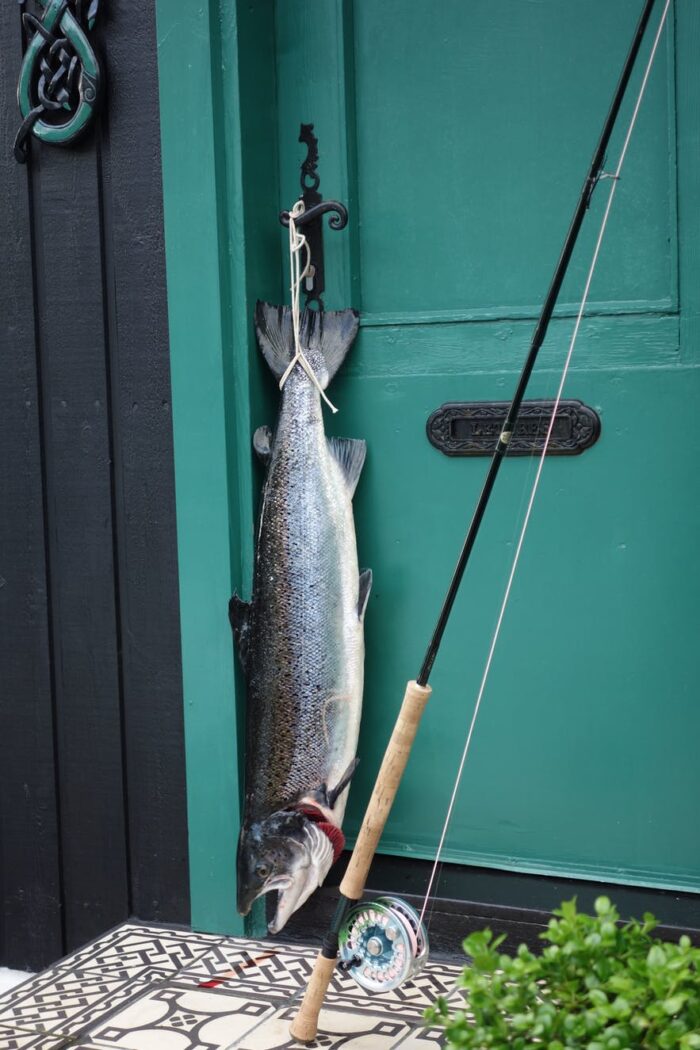
If the Faroes are presently just an unknown destination on your travel map, it is time for you to discover them yourself. If you just know the cluster of islands are somewhere far in the north and have perhaps heard a passing reference about the National Football Team in the Faroe Islands, it is time to discover them for yourself.
The Faroe Islands are breathtakingly beautiful, hospitable, modern, and at the same time such a primal land that it is certainly one of the world’s last paradises for sports fishing enthusiasts and others. Get to know your options for flights to the Faroe Islands and take the next step.
